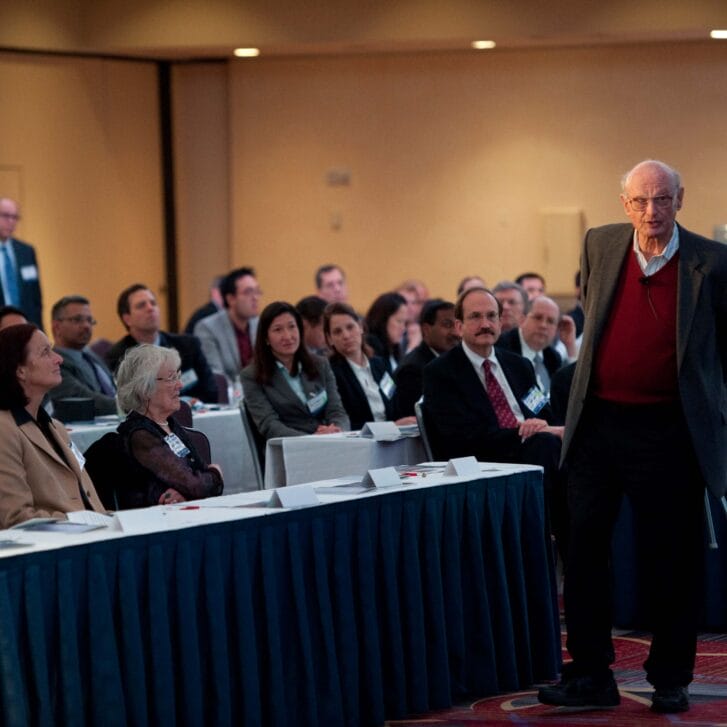Social media—you can’t live with it, and you can’t live without it if you’re a marketer.
Ron Surfield, WG’06, a senior vice president at Edelman who leads its Atlanta digital practice, reported that the P.R. firm’s largest clients are struggling with how and when to spend their ad dollars—and how to calculate actual social media ROI. It’s an even bigger challenge for business-to-business marketers, Surfield said, because so many other marketing streams are involved that could impact an ultimate sale.

Listening attentively at the “Innovative Approaches to Measuring Advertising Effectiveness” conference. Photo credits: Shira Yudkoff.
Surfield spoke at the “Innovative Approaches to Measuring Advertising Effectiveness” conference hosted by the Wharton Customer Analytics Initiative (WCAI) and the Wharton Future of Advertising Program (WFoA). The event was a prime time for practitioners and academics to discuss how “big data” and new tracking data have the potential to transform—and in many cases, already are changing—an industry used to listening to the intuition of Madison Avenue’s “Mad Men.”
The academics presented highlights from their innovative research. Eva Anderl and Jan H. Schumann of Germany’s Universität Passau, for instance, discussed their model for determining the partial value of each marketing contact along a consumer’s route to purchasing something. Anderl noted how such a model would be especial worthwhile to small and midsize firms without the statistics resources in their marketing departments. Traditionally, SMEs give the last contact in such chains all the credit.
Jose-Domingo Mora, an assistant professor of marketing at the Charlton College of Business, University of Massachusetts Dartmouth, presented his research on television viewers in Mexico and how co-exposure affects how they watch programs and respond to advertisements. Essentially, people tend to behave differently when they watch TV alone versus with, say, a daughter or wife.
For all of the excitement that the latest academic research generated, it was counterbalanced at the WCAI event by the tell-it-like-it-is insights of practitioners.

David Reibstein, the William Stewart Woodside Professor, was one of the marketing academics in attendance.
For all that talk about the importance of social media advertising, Andy Fisher, chief analytics officer of Merkle, said that TV still represents the largest outlet where companies spend their marketing dollars: roughly 33 percent on TV versus, at most, 15 percent on digital—though he added that marketers now realize the two mediums are interdependent, with TV driving consumers to search online.
As for big data? Yes, Fortune 500 firms typically work from 400 to 500 data sources, said Fisher, yet the companies that know how to make sense of the information—for example, by melding together “media mix modeling” with how they attribute sales to particular marketing channels—do not share their successes.
“A lot of the advanced analytics really happens behind the scenes,” Merkle said.
This perhaps only provides ammunition to big data skeptics out there.
At least at the WCAI event, the knowledge was being freely passed around.
The Wharton Customer Analytics Initiative is the pre-eminent academic research center focusing on the development and application of customer analytic methods. It is co-directed by Eric T. Bradlow, the K.P. Chao Professor and vice dean of Wharton Doctoral Programs, and Peter S. Fader, the Frances and Pei-Yuan Chia Professor. The Wharton Future of Advertising Program provides a global intellectual hub to challenge prevailing mental models by inspiring, engaging and bridging academics and practitioners in advertising. Yoram “Jerry” Wind, the Lauder Professor and director of SEI Center for Advanced Studies in Management, serves as the WFoA director.

























